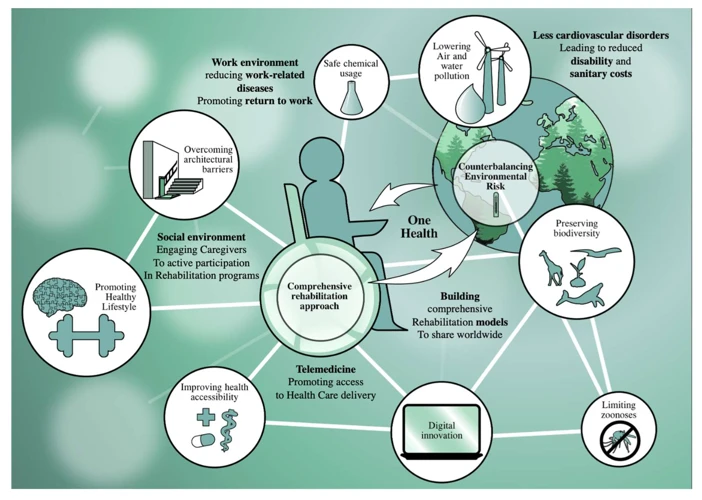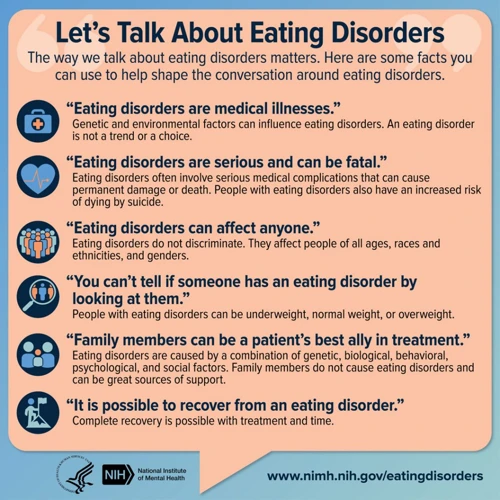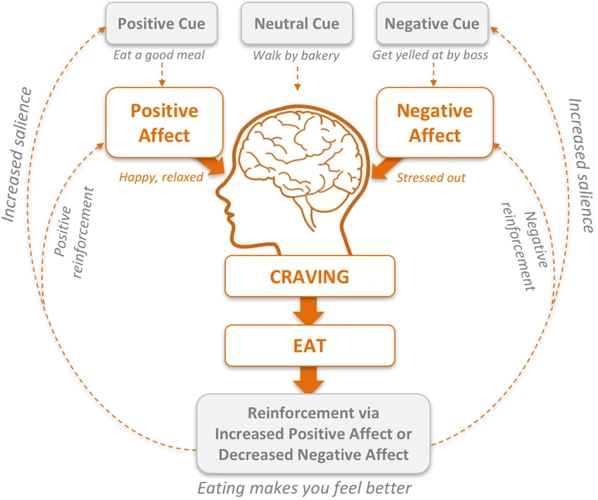Many of us struggle with overeating, especially when we are trying to lose weight. We try to stick to healthy diets and exercise regularly, but there are times when we feel like we just can’t resist our cravings. Have you ever wondered why this happens? We often blame ourselves for lack of willpower or discipline, but there may be external factors that trigger our overeating. These are called environmental triggers. In this article, we will explore what environmental triggers are, how they affect our eating habits, and how we can identify and manage them to achieve our weight loss goals.
Why Environmental Triggers Matter

Have you ever found yourself reaching for a bag of chips or a pint of ice cream even when you’re not particularly hungry? It’s possible that your surrounding environment may be triggering you to eat. Environmental triggers can have a significant impact on our eating habits and make it challenging to manage our hunger and cravings while trying to lose weight. Understanding why environmental triggers matter is crucial to developing healthy eating habits and achieving our weight loss goals. In this section, we will explore the concept of environmental triggers and how they contribute to overeating.
Understanding What Environmental Triggers Are
Environmental triggers refer to external cues or situations that can stimulate an individual’s appetite, leading to overeating and weight gain. These cues may be either visual or sensory and can evoke a subconscious desire to eat, often without the individual realizing it. Understanding environmental triggers is crucial when it comes to managing hunger and cravings during weight loss journeys.
To better comprehend the concept of environmental triggers, let’s take a look at the following table:
| Environmental Triggers | Description |
|---|---|
| Visual Cues | Stimuli that are seen and can lead to the desire to eat, such as advertisements, food displays, or even seeing others eat |
| Sensory Cues | Stimuli that are experienced through the senses, such as smells or sounds, that stimulate appetite |
| Situational Cues | Triggers that are associated with particular environments or activities that may stimulate the appetite, such as eating while watching TV or going to a movie theater |
| Emotional Cues | Triggers that are linked to emotional states, such as stress or boredom, which can lead to overeating as a form of comfort or distraction |
Understanding the various types of environmental triggers can help individuals identify their personal triggers and take appropriate steps to manage them. By recognizing their triggers and developing coping strategies, individuals can better manage their hunger and cravings, leading to more successful weight loss journeys.
How Environmental Triggers Affect Overeating
Environmental triggers can have a significant impact on overeating habits. Understanding how these triggers affect our eating behavior can be a crucial step in managing our hunger and cravings. Below is a table that outlines some ways environmental triggers can lead to overeating:
| Environmental Trigger | Effect on Overeating |
|---|---|
| Stress | Stress can lead to the release of cortisol, a hormone that can increase appetite and encourage overeating. Additionally, when we are stressed, we may feel less motivated to cook or prepare healthy meals and instead opt for quick, convenient, and often unhealthy options. |
| Social situations | When we are with others who are overeating or consuming unhealthy foods, we may be more likely to do the same. We may also feel pressure to eat in social situations, even if we are not hungry or do not want to indulge in unhealthy options. |
| Food availability | When there is an abundance of food available, such as at buffets or during holidays, we may feel tempted to overeat even if we are not hungry. The sight and smell of food can trigger our desire to eat, and the abundance of options can make us want to try everything. |
| Advertising | Advertisements and food packaging can create a sense of desire and craving for certain foods, even if we are not hungry or do not typically eat those types of foods. The use of bright colors, catchy slogans, and appetizing imagery can motivate us to indulge in unhealthy options. |
By recognizing these environmental triggers and their effects on our eating behavior, we can start to take steps to manage them and improve our overall health and weight management.
Identifying Environmental Triggers

Finding the root cause of overeating can often be a struggle, but it is vital in achieving successful weight loss. One of the most important aspects of this is identifying environmental triggers that may be contributing to overeating. These triggers can vary greatly from person to person and may not be immediately apparent. It’s crucial to embark on a journey of self-awareness in order to recognize the triggers that may be causing overeating. In this section, we will delve into the different types of environmental triggers and how to identify them, in order to effectively manage your hunger and cravings while pursuing your weight loss goals.
Common Types of Environmental Triggers
Many different types of environmental triggers can lead to overeating and weight gain. Some of the most common types of environmental triggers include:
- Visual cues: These are environmental factors that can stimulate the senses and make us want to eat, such as seeing a commercial for a fast food restaurant on television or walking past a bakery with the aroma of fresh-baked goods wafting out.
- Emotional cues: Stressful situations, anxiety, depression, boredom, and other high-emotion states can trigger the desire to eat, even when we are not actually hungry.
- Environmental cues: These triggers come from our surroundings and can include everything from the lighting and music in a restaurant to the size of dishes or the placement of food on a buffet table.
- Social cues: Eating with others can be a trigger for overeating if we feel pressured to keep up with what others are eating, or if we feel embarrassed about eating less than others.
- Habitual cues: These triggers come from deeply ingrained habits, such as eating ice cream after dinner every night or reaching for a bag of chips while watching television.
By being aware of these common types of environmental triggers, we can start to identify the situations and stimuli that are most likely to lead to overeating. This knowledge will be crucial in developing effective strategies to manage our hunger and cravings while trying to lose weight.
How to Identify Your Personal Environmental Triggers
One of the keys to managing environmental triggers for overeating is to identify your personal triggers. Everyone has different triggers that can lead to overeating, and it’s important to be aware of them so that you can develop strategies to cope with them. Here are some steps you can take to identify your personal environmental triggers:
| Step | Description |
|---|---|
| 1. Keep a food diary | Write down everything you eat and drink, as well as the time of day and any emotions or situations you were in when you ate. You might start to see patterns emerge that can help you identify your environmental triggers. |
| 2. Pay attention to your emotions | Many people turn to food when they’re feeling stressed, anxious, or bored. If you find yourself reaching for snacks when you’re feeling a certain way, make a note of it in your food diary. |
| 3. Identify your trigger foods | Some people have certain foods that they can’t resist, such as ice cream or potato chips. If you have a trigger food, make a note of it in your food diary and try to avoid keeping it in the house. |
| 4. Take note of your surroundings | Are there certain places or situations that make you more likely to overeat? For example, maybe you always eat too much at family gatherings or when you’re watching TV. By identifying your surroundings, you can be more aware of when you’re in a high-risk situation. |
| 5. Consider your schedule | Do you tend to overeat at certain times of day? For example, maybe you always snack in the late afternoon when you’re feeling tired. By identifying these patterns, you can plan healthy snacks or activities to keep yourself from overeating. |
By taking the time to identify your personal environmental triggers, you can develop a plan for managing them. With practice and patience, you can find strategies that work for you and help you achieve your weight loss goals.
How to Cope with Environmental Triggers
For those striving to lose weight, managing environmental triggers is crucial. It can be difficult to resist the temptation of overeating when faced with certain triggers, such as the smell of freshly baked goods or the sight of a fast-food restaurant. However, there are various techniques to cope with these triggers and avoid derailing progress towards weight loss goals. In this section, we will explore effective ways to manage environmental triggers and maintain a healthy eating pattern.
Avoiding or Minimizing Exposure to Environmental Triggers
One effective way to manage environmental triggers for overeating is to avoid or minimize exposure to them in the first place. By eliminating or reducing your exposure to these triggers, you are effectively reducing the likelihood of consuming excess calories and thus promoting a more effective weight loss journey.
Here are some strategies for avoiding or minimizing environmental triggers:
- Don’t Keep Tempting Foods in Your Home: If you’re someone who is easily tempted by sweet or salty snacks, the best approach might simply be to avoid keeping them in your home altogether. Instead, make a habit of only buying healthy foods that support your weight loss goals.
- Avoid Eating in Front of the Television: If you tend to overeat while watching your favorite TV show or movie, it might be time to change this habit. Find a new activity to enjoy while you eat or sit at the table with friends or family members to promote mindful eating habits.
- Avoid Fast Food Chains: Fast food chains are notorious for offering unhealthy food options that are high in fat, salt and sugar. Instead, make it a habit to cook your meals at home more often or opt for healthier restaurant options when you eat out.
- Plan Ahead: One of the best ways to avoid environmental triggers is to plan ahead. If you know you’ll be attending a party or event where unhealthy foods will be served, plan your meals ahead of time so that you’re not starving and tempted to indulge in unhealthy options. Alternatively, bring a healthy dish to share with others.
- Seek Out Support: If you’re struggling to avoid environmental triggers on your own, consider seeking out the support of a friend or a professional. It could be as simple as asking a friend to be your accountability partner or enlisting the help of a registered dietician or nutritionist to help you develop a personalized plan for success.
Remember, the goal is to create an environment that is conducive to success and promotes healthy eating habits. By avoiding or minimizing exposure to environmental triggers that contribute to overeating, you can set yourself up for long-term success on your weight loss journey.
Finding Positive Replacements for Environmental Triggers
One effective way to manage environmental triggers for overeating is to find positive replacements for them. Here are some examples:
- Replace mindless snacking with mindful activities: Rather than mindlessly snacking on unhealthy foods, try engaging in a mindful activity such as yoga, meditation, or deep breathing. These activities can help you reduce stress and anxiety, which are common triggers for overeating.
- Choose healthier alternatives: It’s natural to crave certain foods when you’re feeling stressed or emotional. Instead of indulging in unhealthy foods, try finding healthier alternatives. For example, if you crave something sweet, try eating a piece of fruit or making a smoothie. If you crave something salty, try eating some nuts or roasted chickpeas.
- Stay hydrated: Dehydration can often be mistaken for hunger, so make sure you’re drinking enough water throughout the day. Drinking water can also help you feel full and reduce cravings for unhealthy foods.
- Get moving: Exercise is a great way to reduce stress and boost your mood. It can also help you manage your hunger and cravings. When you feel the urge to overeat, try going for a walk or doing some light exercise instead.
- Practice self-care: Taking care of yourself can help you manage your emotions and reduce stress. Try practicing self-care activities such as taking a hot bath, reading a book, or indulging in a hobby you enjoy. These activities can help you feel more relaxed and reduce your cravings for unhealthy foods.
By finding positive replacements for environmental triggers, you can effectively manage your hunger and cravings while on a weight loss journey. Remember to be patient and kind to yourself as you navigate these changes, and celebrate your successes along the way.
Other Techniques to Manage Environmental Triggers
Aside from avoiding or replacing environmental triggers, there are also other techniques that can be employed to manage these triggers:
| Technique | Description |
|---|---|
| Pause and Reflect | Take a moment to pause when faced with an environmental trigger and reflect on your hunger and cravings. Ask yourself if you are truly hungry or if the trigger is causing your desire to eat. |
| Mindfulness and Meditation | Practicing mindfulness and meditation techniques can help with managing stressful triggers that lead to overeating. It can also help with building awareness for choosing healthier foods. |
| Journaling | Write down your thoughts and feelings regarding the environmental triggers causing overeating. This can help with identifying patterns and finding constructive ways to manage them. |
| Support Groups | Joining a support group can provide a safe and non-judgmental space to discuss and get support for managing environmental triggers. |
| Proper Sleep and Exercise | Lack of sleep or exercise can contribute to overeating, and getting proper amounts of both can help with managing these triggers. |
These techniques can be used alone or in combination with other strategies to effectively manage environmental triggers for overeating. It’s important to find what works best for each individual and to be consistent in using these techniques to maintain long-term weight loss success.
Conclusion
In conclusion, managing environmental triggers for overeating is a critical component of any weight loss program. By understanding the types of environmental triggers that can lead to overeating and identifying your own personal triggers, you can take steps to minimize or avoid exposure to these triggers. Coping strategies such as finding positive replacements for triggers, practicing mindful eating, and seeking support from others can also be helpful in managing environmental triggers. Remember that managing environmental triggers is not always easy and may require some trial and error to find what works best for you. Patience and perseverance are key to successfully managing environmental triggers and achieving weight loss goals. With time and dedication, you can develop a healthier relationship with food and work towards a happier and more fulfilling life.
Frequently Asked Questions
What are some common environmental triggers for overeating?
Common environmental triggers include watching TV, being around others who are eating, seeing or smelling food, boredom, stress, and lack of sleep.
Can environmental triggers affect hunger levels?
Yes, environmental triggers can cause hunger levels to increase or decrease, leading to overeating or undereating.
How can identifying personal environmental triggers help with weight loss?
Identifying personal environmental triggers can help with weight loss by allowing individuals to avoid or replace these triggers, thereby reducing the likelihood of overeating.
Are there any positive replacements for environmental triggers?
Yes, positive replacements for environmental triggers can include engaging in physical activity, practicing mindfulness, or finding a non-food related hobby.
Can avoiding or minimizing exposure to environmental triggers be difficult?
Yes, avoiding or minimizing exposure to environmental triggers can be difficult, especially if they are common in daily life or social situations.
How can stress contribute to overeating?
Stress can contribute to overeating by increasing levels of the hormone cortisol, which can stimulate hunger and cravings for unhealthy foods.
What techniques can be used to manage environmental triggers?
Techniques for managing environmental triggers may include mindfulness, distraction, self-talk, and seeking support from others.
Can lack of sleep contribute to overeating?
Yes, lack of sleep can disrupt hunger hormones and increase feelings of hunger, leading to overeating.
How can practicing mindfulness help with managing environmental triggers?
Practicing mindfulness can help individuals become more aware of their thoughts, emotions, and bodily sensations, allowing them to better manage cravings and avoid overeating.
What should be the ultimate goal when managing environmental triggers for overeating?
The ultimate goal when managing environmental triggers should be to develop a healthy relationship with food and learn how to eat mindfully and intuitively, without reliance on external triggers.







